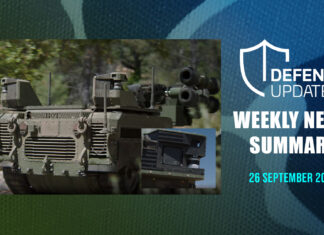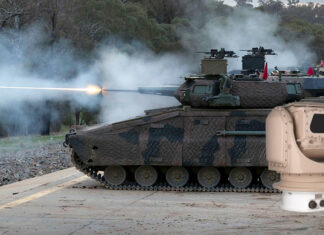Enhancing the concept of UGS into a closed-loop net-centric weapon system, the IMS systems will be fielded as part of the Future Combat Systems (FCS) program, providing alerting, location and destruction of enemy forces, as well as reliable battle damage information.
The IMS sensor will gather data and transmit target features based on three types of target signatures: acoustic, magnetic and seismic. Each sensor node will be able to provide signatures to estimate the target type, bearing and direction of movement. The system will be able to differentiate between tanks, trucks and personnel carriers and send reports to the control point. IMS will use self-configuring and self-healing communications network integrated into the Brigade-and-Below (FBCB2) and the Unit of Action networks.
The system will also be able to determine the appropriate effects module to engage the target and the time it should activate for maximum effectiveness. Distributed situational awareness nodes will be used as an integral part of the system, providing sensing and communications to the intelligent munitions. The munitions will use mature Skeet based scatterable mine warhead technology providing wide area top attack effects against vehicles and fragmenting grenade lethality against dismounted personnel. It will be interoperable with the Spider antipersonnel landmine system.
Used for battlefield shaping, IMS will be employed to deny terrain and isolate enemy forces, objectives and areas of decisive operations, preventing enemy reinforcement their withdrawal. As enemy movements in areas under IMS attacks are reduced, targets will also become easy prey for other means of attack. With the capability to be switched on and off on command from friendly forces, IMS will render a flexible obstacle providing the Unit of Action (UA) maximum security and maneuvering flexibility. Operated in force protection roles, IMS will be used to secure flanks, protect fixed facilities, provide close-in protection of small units, fill gaps in dangerous terrain. When equipped with non-lethal munitions, IMS will be able to deny non-combatant movement in certain areas, and reduce the risk of collateral damage in uncertain situations.
The IMS will be deployed dynamically, as part of the UA maneuverability and battlefield shaping actions. Systems could be hand-emplaced, remotely delivered, or launched from a dispenser module carried by manned or unmanned ground vehicles.
On 6th July 2006 Textron Systems was awarded a US$115 million contract for the IMS design and development phase. Low-rate initial production of IMS is scheduled to start in 2008; delivery is scheduled for 2010. Textron Systems’ team partners include Northrop Grumman, ITT Industries and BAE Systems. The IMS program is managed by the Army’s Office of Project Manager Close Combat Systems.
Additional parts of this article:
-
Unattended Integrated Sensor-Weapon Systems (IMS)



















